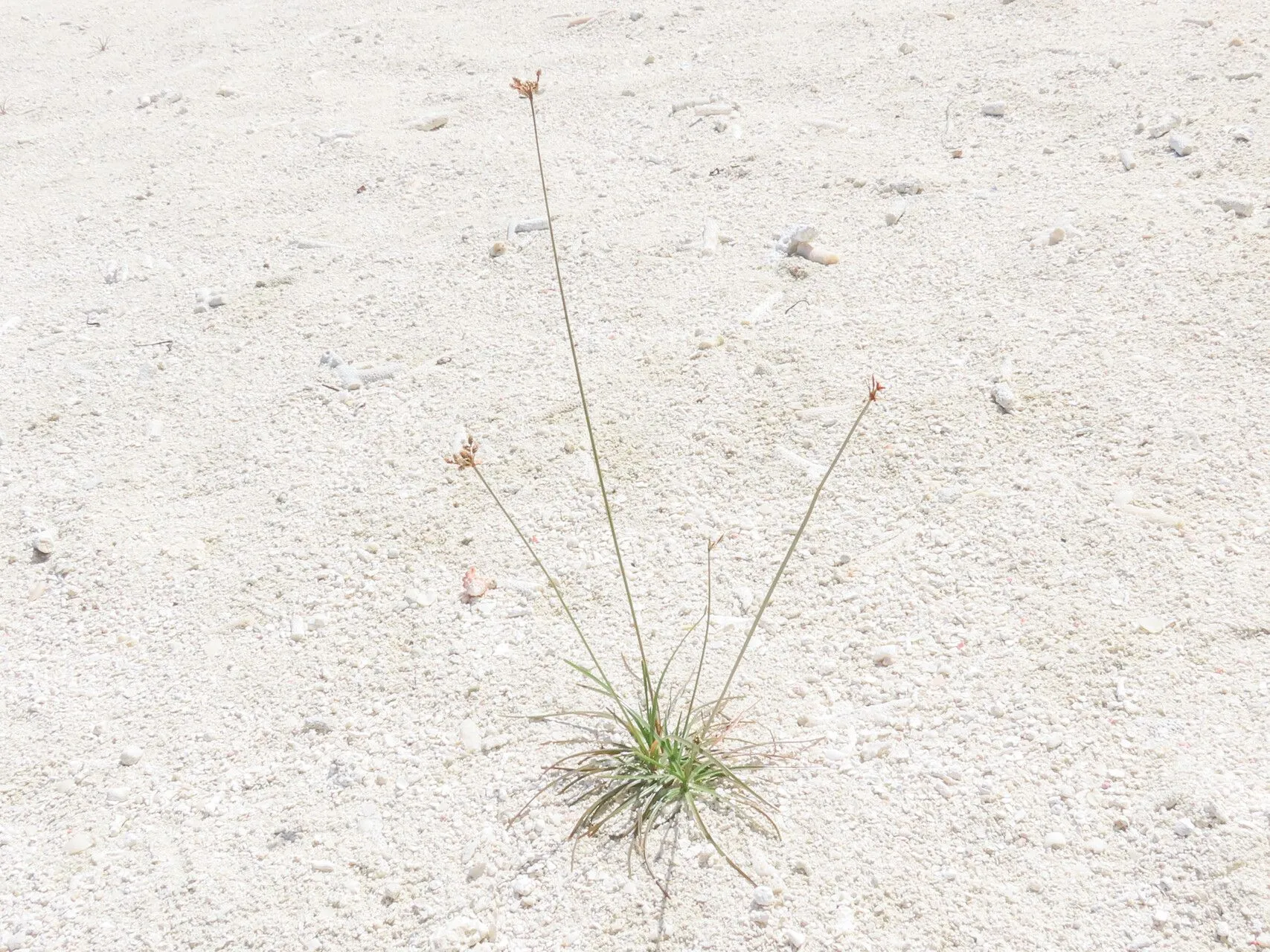
Author: R.Br.
Bibliography: Prodr. Fl. Nov. Holland.: 228 (1810)
Year: 1810
Status: accepted
Rank: species
Genus: Fimbristylis
Vegetable: False
Observations: Tropics & Subtropics
Tropical fimbry, known scientifically as Fimbristylis cymosa, is a versatile plant that thrives in both tropical and subtropical regions. First documented in 1810 by botanist Robert Brown in his work “Prodr. Fl. Nov. Holland.”, this species belongs to the Cyperaceae family, a considerable group comprising various sedges.
Renowned for its adaptability, tropical fimbry can be found in a wide array of environmental settings, from moist coastal areas to more arid landscapes. This hardy plant contributes to the biodiversity of its habitats and plays a role in soil stabilization, thereby preventing erosion in coastal zones.
Its distinct appearance, characterized by slender, tufted stems and small, clustered spikelets, makes it an identifiable member of the grass-like Cyperaceae family. Often seen gracing the edges of water bodies and other damp environments, Fimbristylis cymosa is an integral component of the ecosystems it populates.
Whether you encounter tropical fimbry in the lush tropics or the warmer subtropics, its presence signifies a plant well-adapted to its surroundings, illustrating the remarkable breadth of flora within the Cyperaceae family.
Msa: rusiga
Eng: tropical fimbry
En: Tropical fimbry
Ms: Rusiga
: Hurricanegrass
© copyright of the Board of Trustees of the Royal Botanic Gardens, Kew.
© copyright of the Board of Trustees of the Royal Botanic Gardens, Kew.
© copyright of the Board of Trustees of the Royal Botanic Gardens, Kew.
Taken Apr 3, 2022 by Emanuele Santarelli (cc-by-sa)
Taken Jun 19, 2021 by Augustin Soulard (cc-by-sa)
Taken Jun 7, 2022 by Luis Elias Chahua Janampa (cc-by-sa)
Taken Aug 16, 2022 by Ash Welch (cc-by-sa)
Taken Apr 3, 2022 by Emanuele Santarelli (cc-by-sa)
Taken Apr 3, 2022 by Emanuele Santarelli (cc-by-sa)
Taken Nov 20, 2010 by Tela Botanica − Liliane Roubaudi (cc-by-sa)
Taken Nov 20, 2010 by Tela Botanica − Liliane Roubaudi (cc-by-sa)
Taken Nov 20, 2010 by Tela Botanica − Liliane Roubaudi (cc-by-sa)
Taken Nov 20, 2010 by Tela Botanica − Liliane Roubaudi (cc-by-sa)
Taken Aug 16, 2022 by Ash Welch (cc-by-sa)
Growth habit>: Graminoid
Family: Myrtaceae Author: (F.Muell.) K.D.Hill & L.A.S.Johnson Bibliography: Telopea 6: 402 (1995) Year: 1995 Status:…
Family: Rubiaceae Author: Pierre ex A.Froehner Bibliography: Notizbl. Bot. Gart. Berlin-Dahlem 1: 237 (1897) Year:…
Family: Sapindaceae Author: Koidz. Bibliography: J. Coll. Sci. Imp. Univ. Tokyo 32(1): 38 (1911) Year:…
Family: Asteraceae Author: A.Gray Bibliography: Pacif. Railr. Rep.: 107 (1857) Year: 1857 Status: accepted Rank:…
Family: Fabaceae Author: Medik. Bibliography: Vorles. Churpfälz. Phys.-Ökon. Ges. 2: 398 (1787) Year: 1787 Status:…
Family: Aspleniaceae Author: (Cav.) Alston Bibliography: Bull. Misc. Inform. Kew 1932: 309 (1932) Year: 1932…